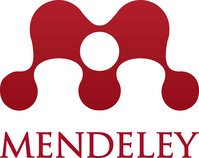Exploring the Juvenile Delinquency Involvements of Former Young Male Juvenile Delinquents
DOI:
https://doi.org/10.31436/ijes.v11i1.462Keywords:
delinquency involvement, delinquent behaviours, male juvenile delinquents, adolescents, phenomenological studyAbstract
In recent years, the incidence of juvenile delinquency has been increasing, posing a threat to the well-being of families and society. This urges the understanding of the involvement in delinquent behaviours among young male juvenile delinquents. The main objective of this study was to explore juvenile delinquent involvement among former young male juvenile delinquents. A phenomenology qualitative research design was utilised to explore the participants’ lived experiences and their involvement in juvenile delinquency. Eight (8) former young male juvenile delinquents aged 26 years old and below participated in this research. The non-probability sampling technique of snowball sampling was utilised to select the participants. An intake form was administered to obtain the participants’ socio-demographic information. A semi-structured interview questions were used to explore the participants’ involvement in juvenile delinquency. The analysis of the data collected from former young male juvenile delinquents using Interpretative Phenomenological Analysis (IPA) revealed several themes that led to such delinquent behaviours; namely, lucrative business, recidivism, and peer pressure. The results indicate that the participants’ initial involvement was influenced by their social circle or peer group, the challenges of relapse, and the advantages they gained from their unlawful conduct. The analysis of the results helps us determine the need for early intervention in order to prevent the increasing percentage of juvenile delinquency among adolescents in Malaysia.Metrics
Downloads
Published
How to Cite
Issue
Section
License
Copyright (c) 2023 IIUM Press, International Islamic University Malaysia

This work is licensed under a Creative Commons Attribution 4.0 International License.
The Journal will own copyright to all published works and have the right of first publication, both in print and online, unless other arrangements are made with the Editors in advance. It is the author`s responsibility to ensure that where copyright materials are included within an article the permission of the copyright holder has been obtained beforehand.























